The Project
In this project, I intended to utilize generative artificial intelligence (AI) to create numerous intriguing versions of one of history’s most iconic works of art.
The result is a huge collection that contains innovative and inventive renditions while trying to somehow preserve the essence of the original masterpiece.

/ Motivation
My experience with creating images using generative artificial intelligence began in June 2022, first at NightCafé and then through Dall-E, Stable Diffusion and finally MidJourney.
I ended up focusing exclusively on Midjourney, which I consider to be the best AI platform, not only for the quality of the results and tools available, but also for its characteristics and philosophy, where the community spirit is a big differentiator.
Virtual events are held every week where news and features under development are presented, as well as where you can ask questions and talk directly with David Holz, founder and CEO of Midjourney.
I have done many and varied experiments, I had the opportunity to use different generative models, starting with V3, then Test and Test Photo, different magnification models, V5, V5.1… and over this time a milestone emerged where I started to ask myself: what now? what am I going to do now?
Of course, the MidJourney community on Discord and the website brought in hundreds of amazing creations, ideas, graphics and styles every day and this cornucopia of possibilities, many of them tryable, always pushed me forward to try this or that.
Two of my first experiences creating a version of the Mona Lisa in MidJourney.
These images were created using the v.4 model. The first was made with “The Mona Lisa by Leonardo da Vinci”, while the second was made with “The Mona Lisa, Palette knife drawing”.
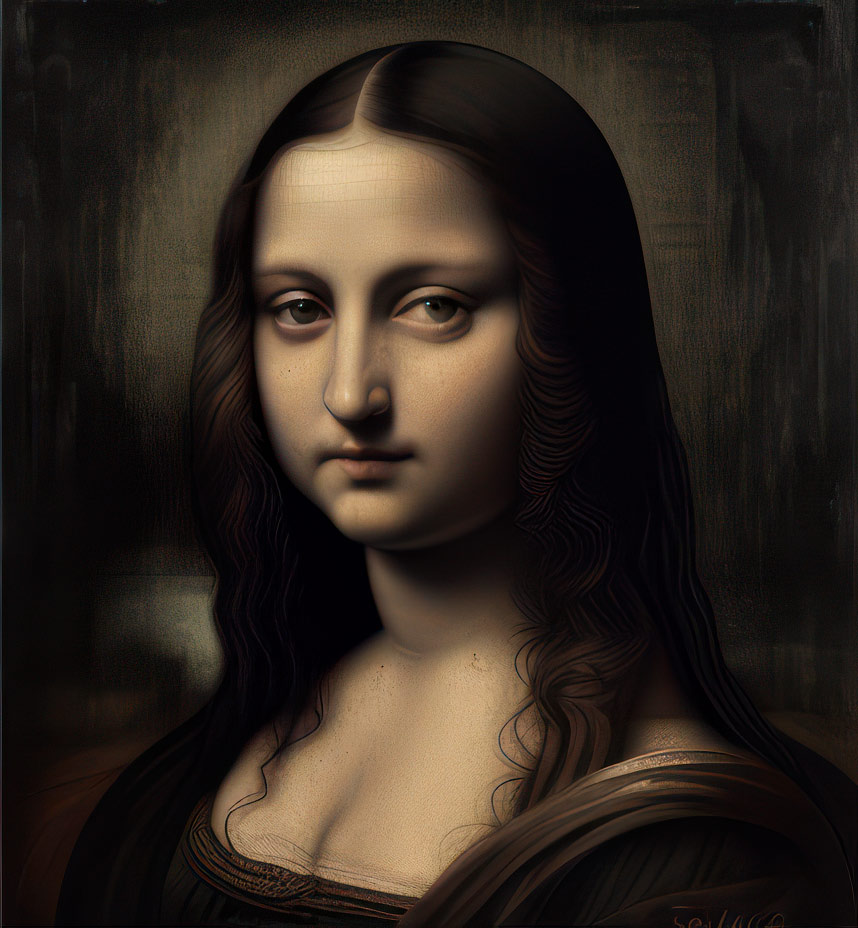
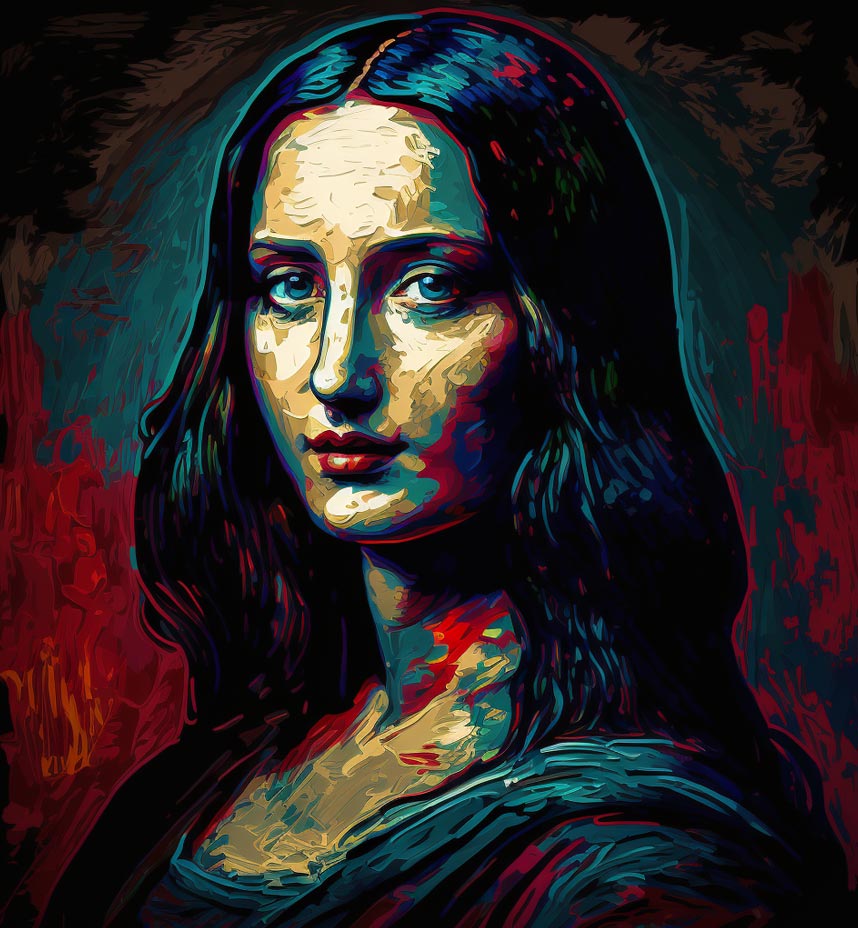
One day the idea came up to try and create a version of Da Vinci’s Mona Lisa. The first question was how Midjourney would interpret such a well-known masterpiece. Would it be possible to make a very similar version? And if I tried to recreate the painting, but in the style of another painter, what would it look like? I did some really cool experiments at the end of December 2022 and then I left this idea aside and continued exploring other paths and themes.
Later I returned to this theme and now, with the issue of AI even more present in all conversations and subjects, I began to think that this story could be interesting and provocative.
/ Objective
What elements make the Mona Lisa “The Mona Lisa”? The hands, the eyes, the smile? The technique, the framing? The mysteries behind its mathematical composition? Obviously all that and much more… its history, the fascination with its creator.
What would people’s reaction be? Would they recognize the Mona Lisa? Would they discover a New Mona Lisa, perhaps cooler? A Mona Lisa more to your style and taste?
There are several interpretations regarding the composition and geometry of the Mona Lisa. In the figure we can see the spiral of golden proportions superimposed on the painting. As Leonardo da Vinci was a great scholar and engineer, it is very likely that his painting was structured on his mathematical concepts and knowledge.
A mathematical composition?
To learn more about the subject,
I recommend reading the following articles:
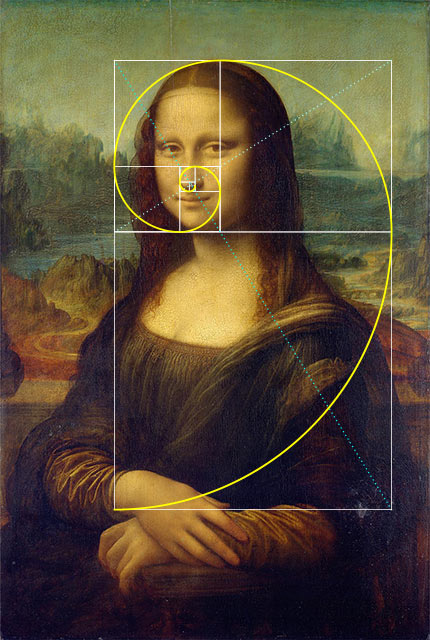
/ Experimentation
Generating images using AI is a very interesting experience. The possibilities seem endless and designing instructions, from the simplest ones like “The Mona Lisa painted by Caravaggio” to the more complex “The Mona Lisa in yellow and purple sits on a bed of oversized plastic ducks, in the style of futuristic surrealism, light sky-blue and light orange, photorealistic, saturated color field, close-up, porcelain finish” with all sorts of functions, tricks and possible adjustments is a real challenge and a fascinating experience full of surprises.
The creator’s control is indeed limited and the result is never quite what you envisioned. Not to mention the incredible feature it has: one creation is never the same as another. Each output is unique and even if you try to reproduce, redo or even run the same command again, the result will be different. Very similar, but also completely different.
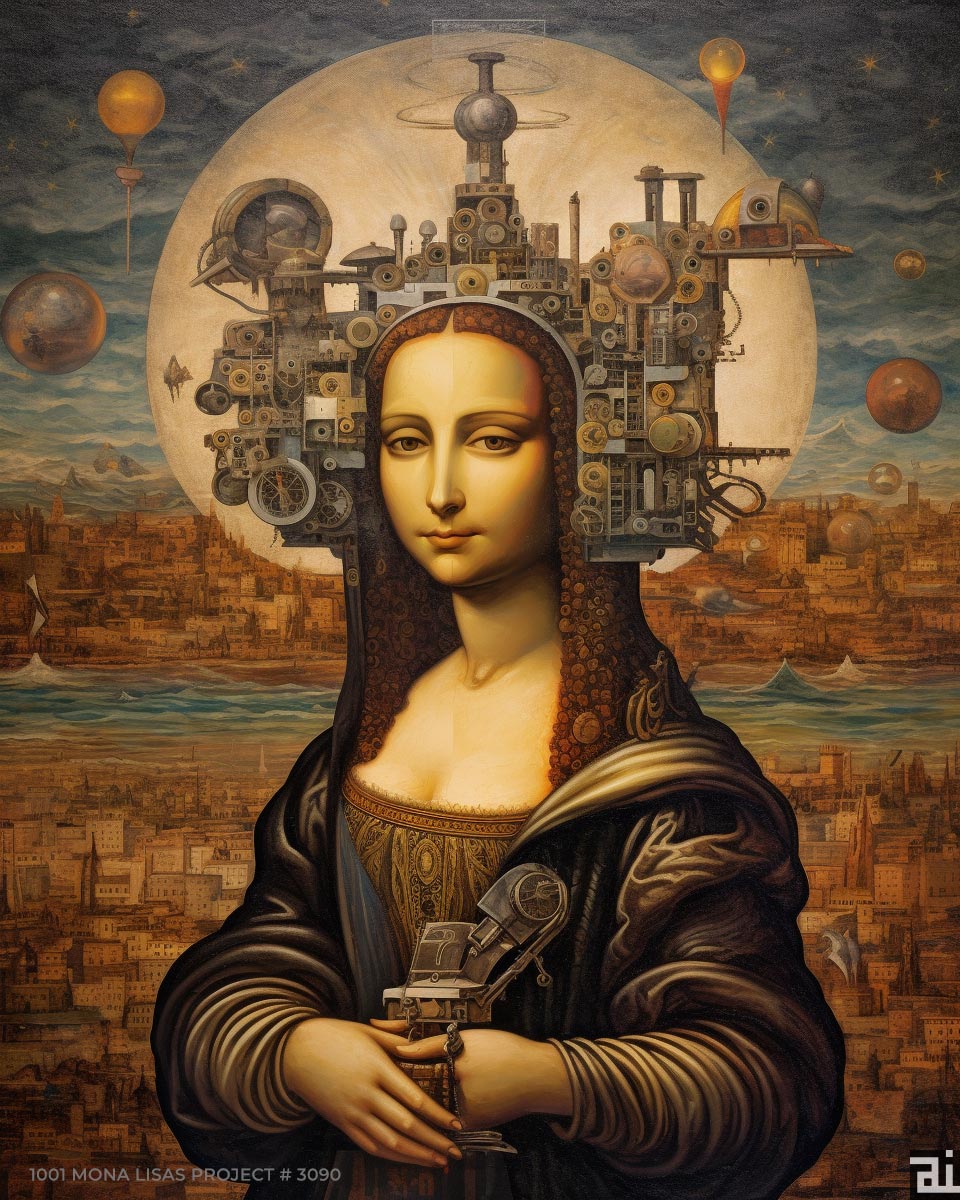
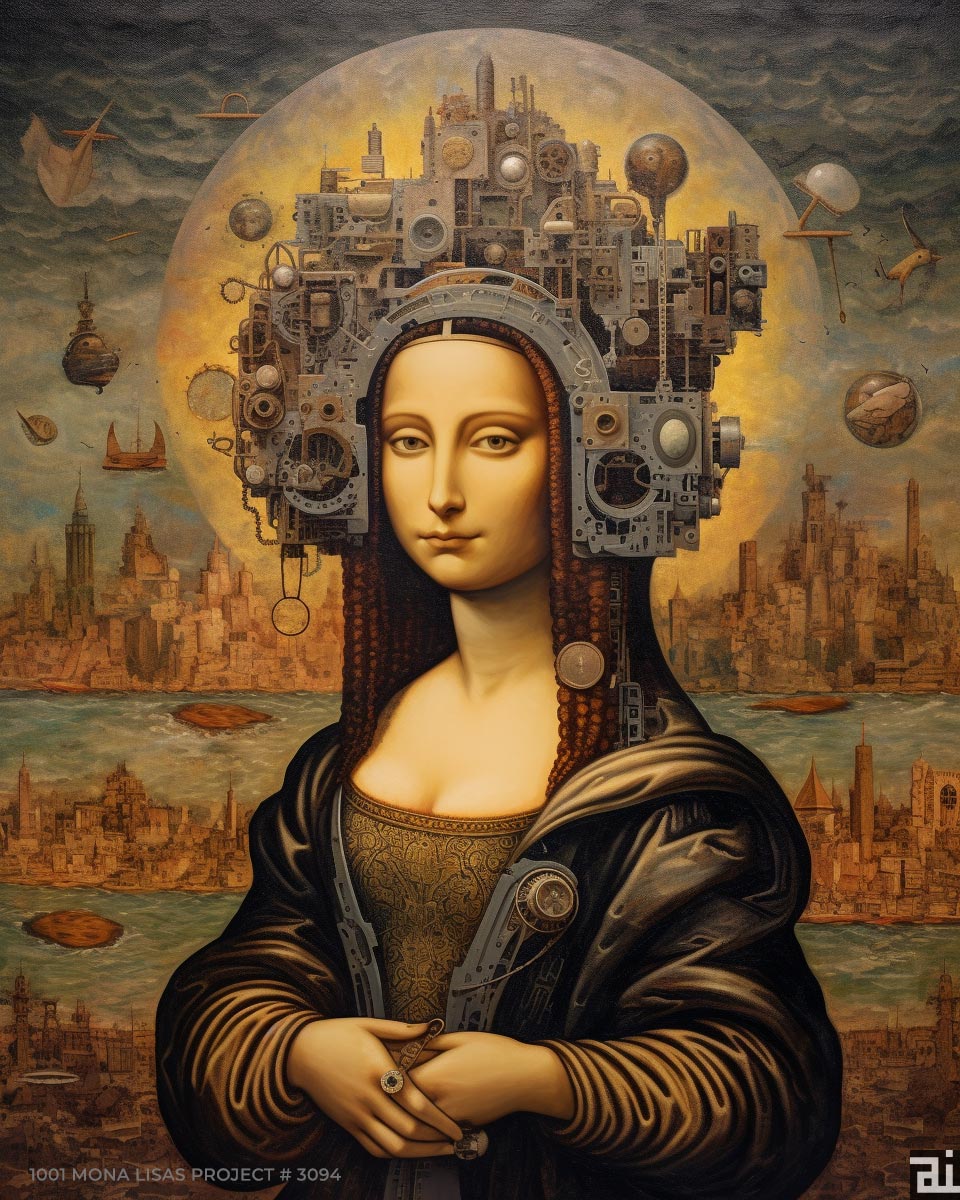
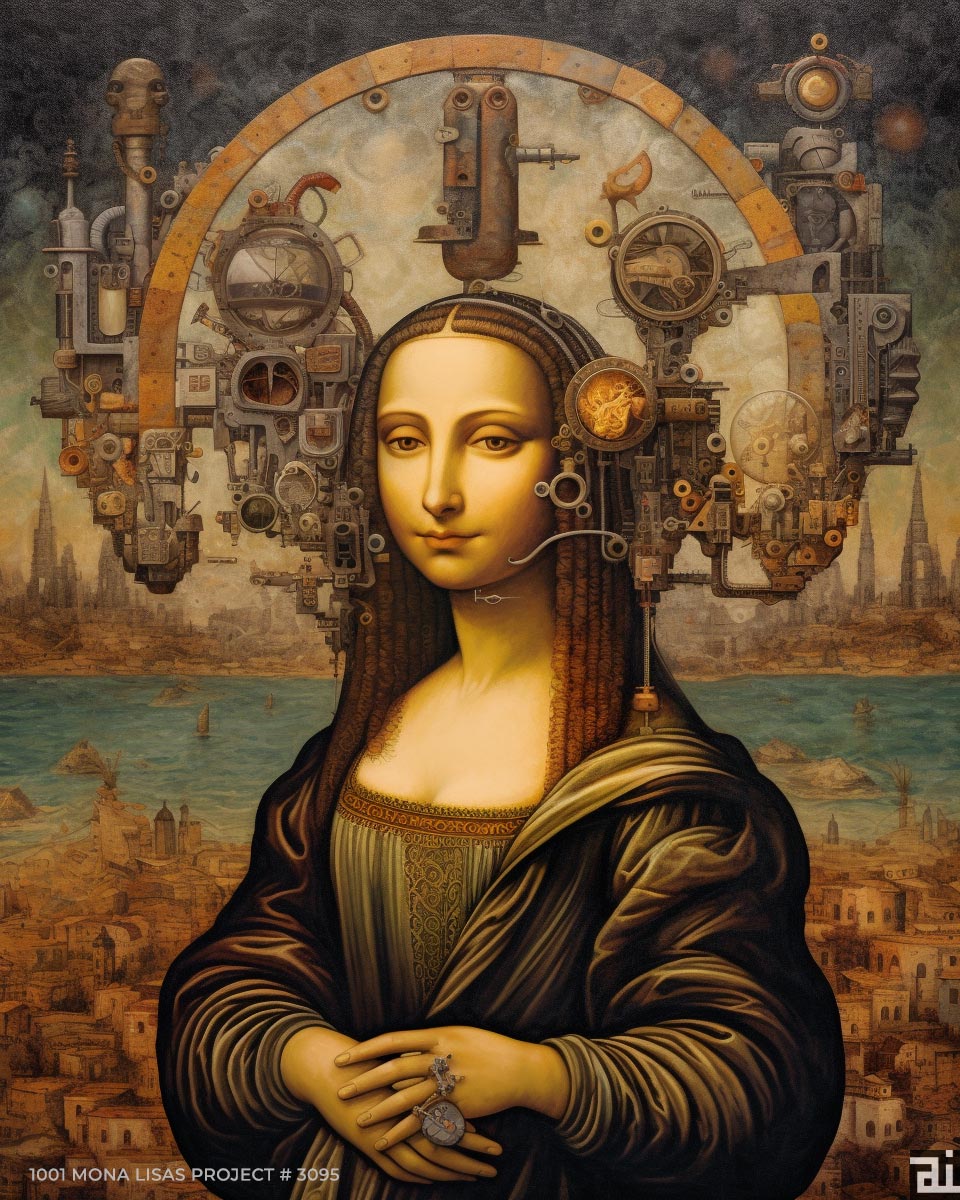
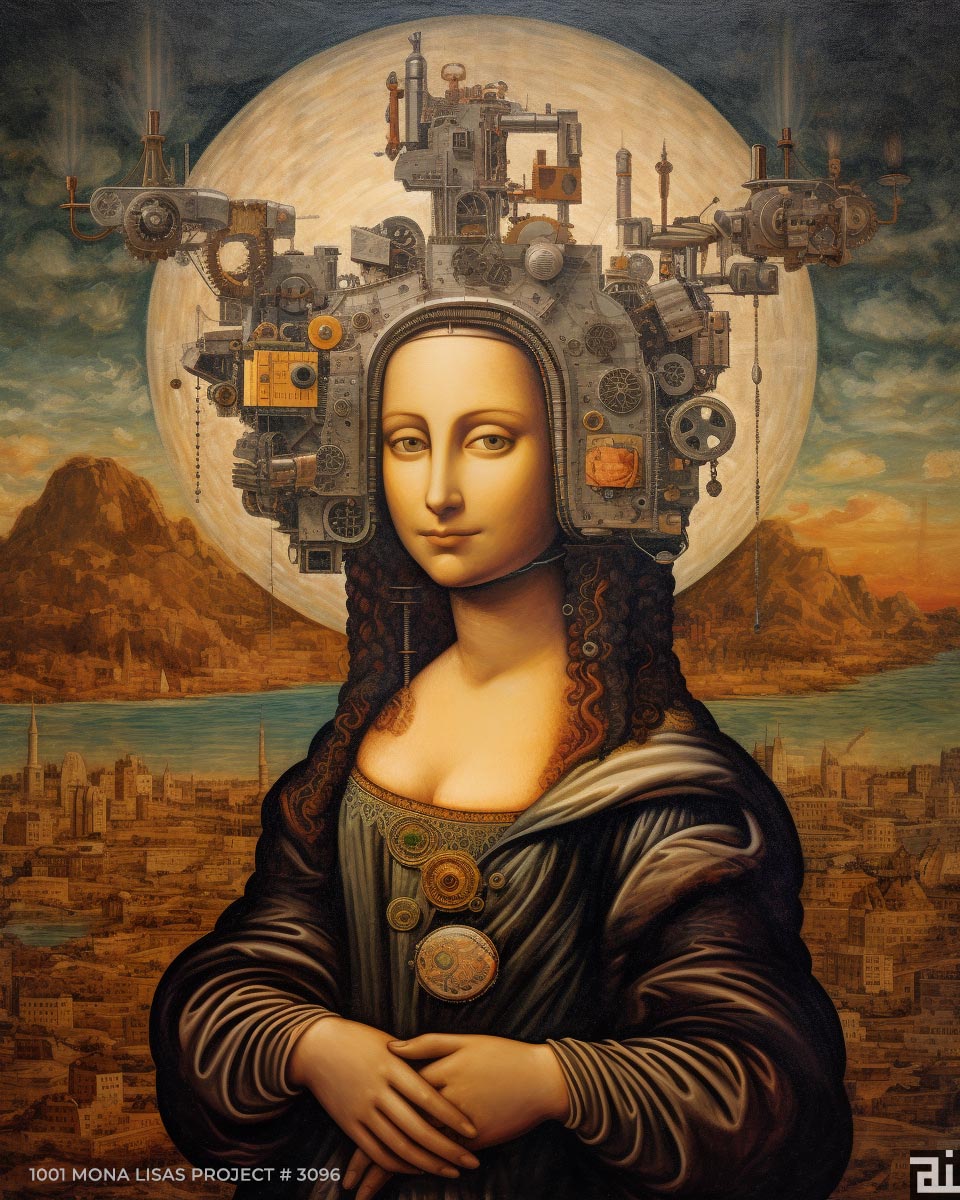
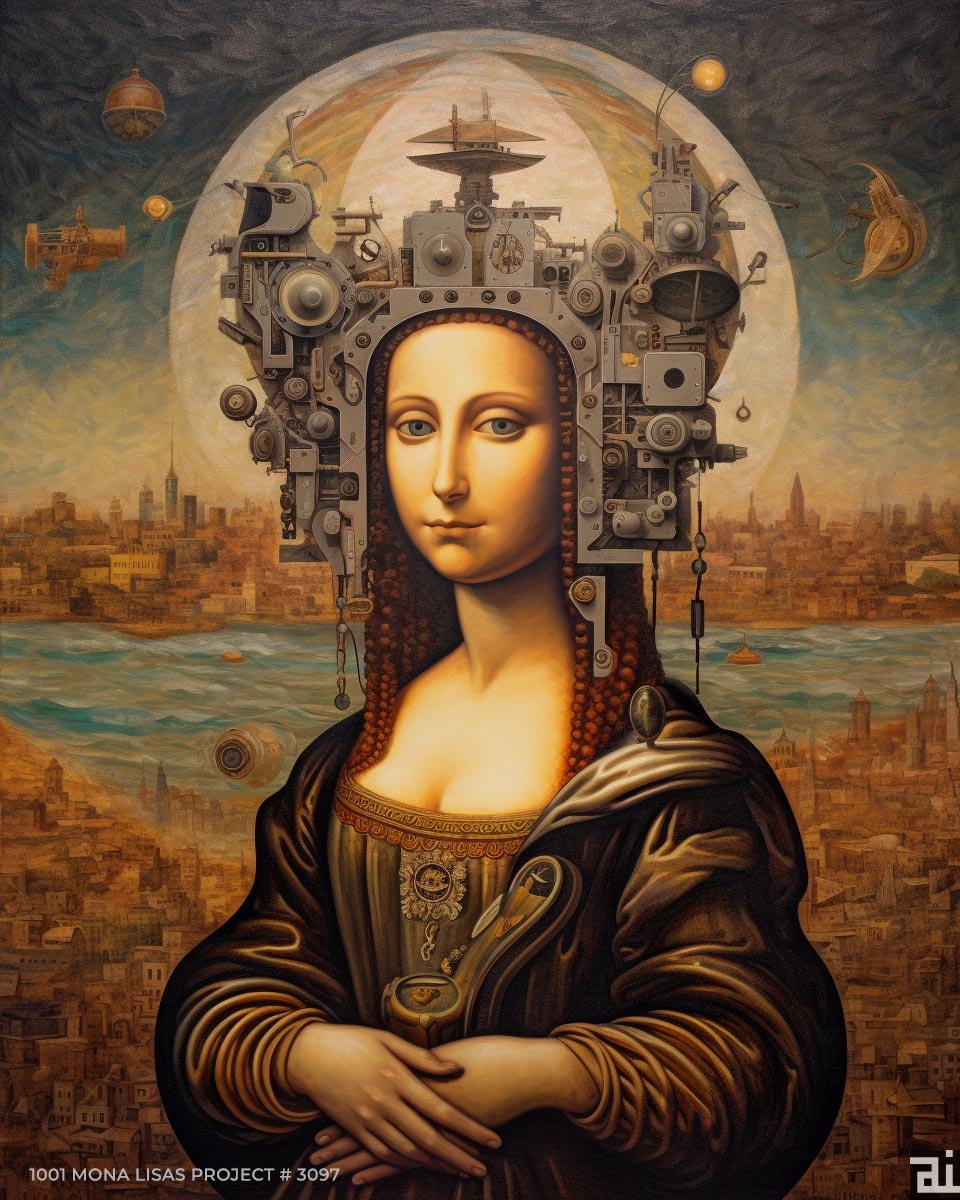
The five versions of the Mona Lisa above were created with the same prompt “The Mona Lisa painted in Steampunk style” with the last four being variations of the first.
At first sight they are very similar but apart from the general composition and colors they are completely different from each other. The details of the outfit, the position of the hands, the details of the face, the stemapunk helmet… nothing is the same.
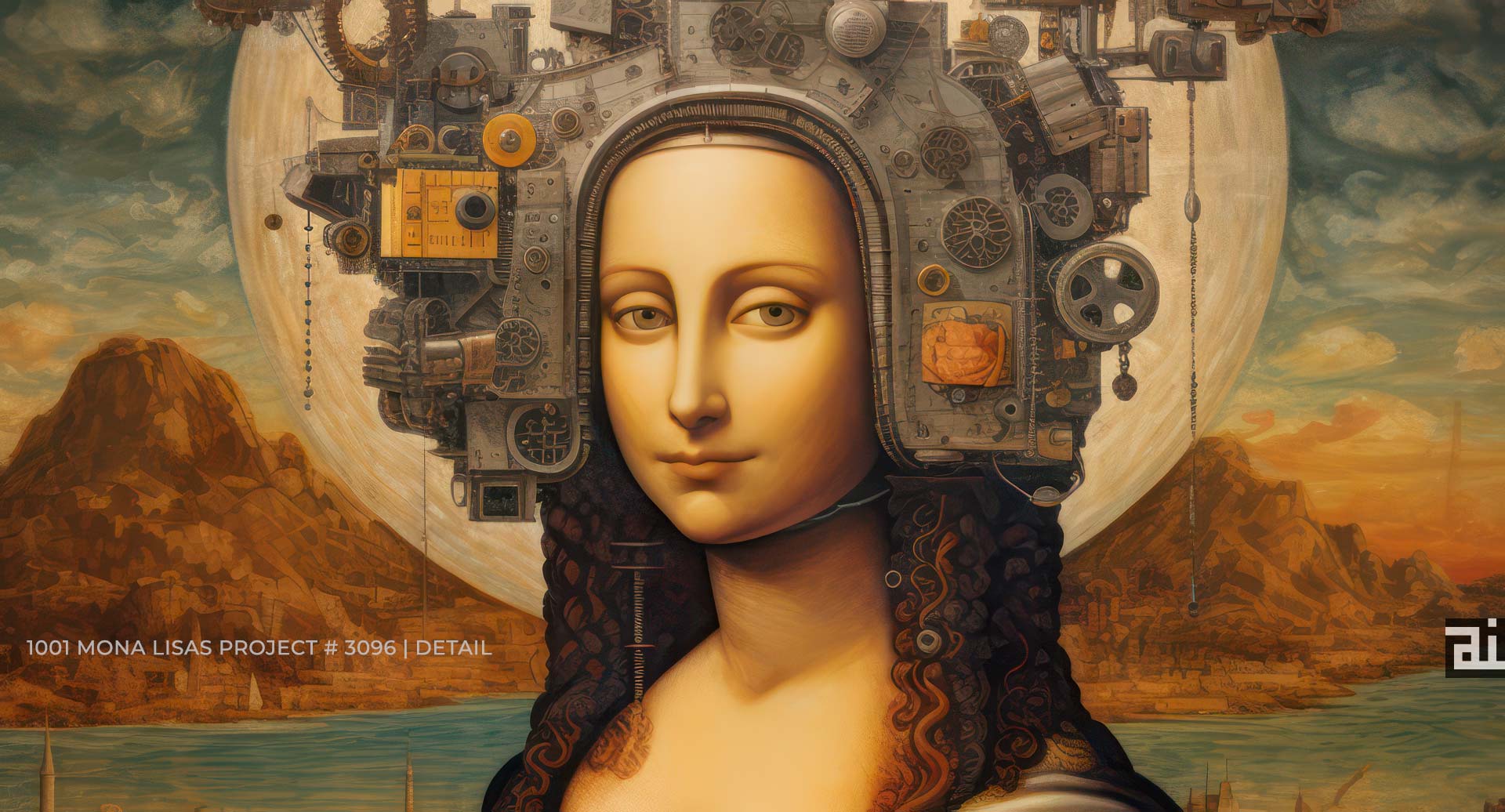
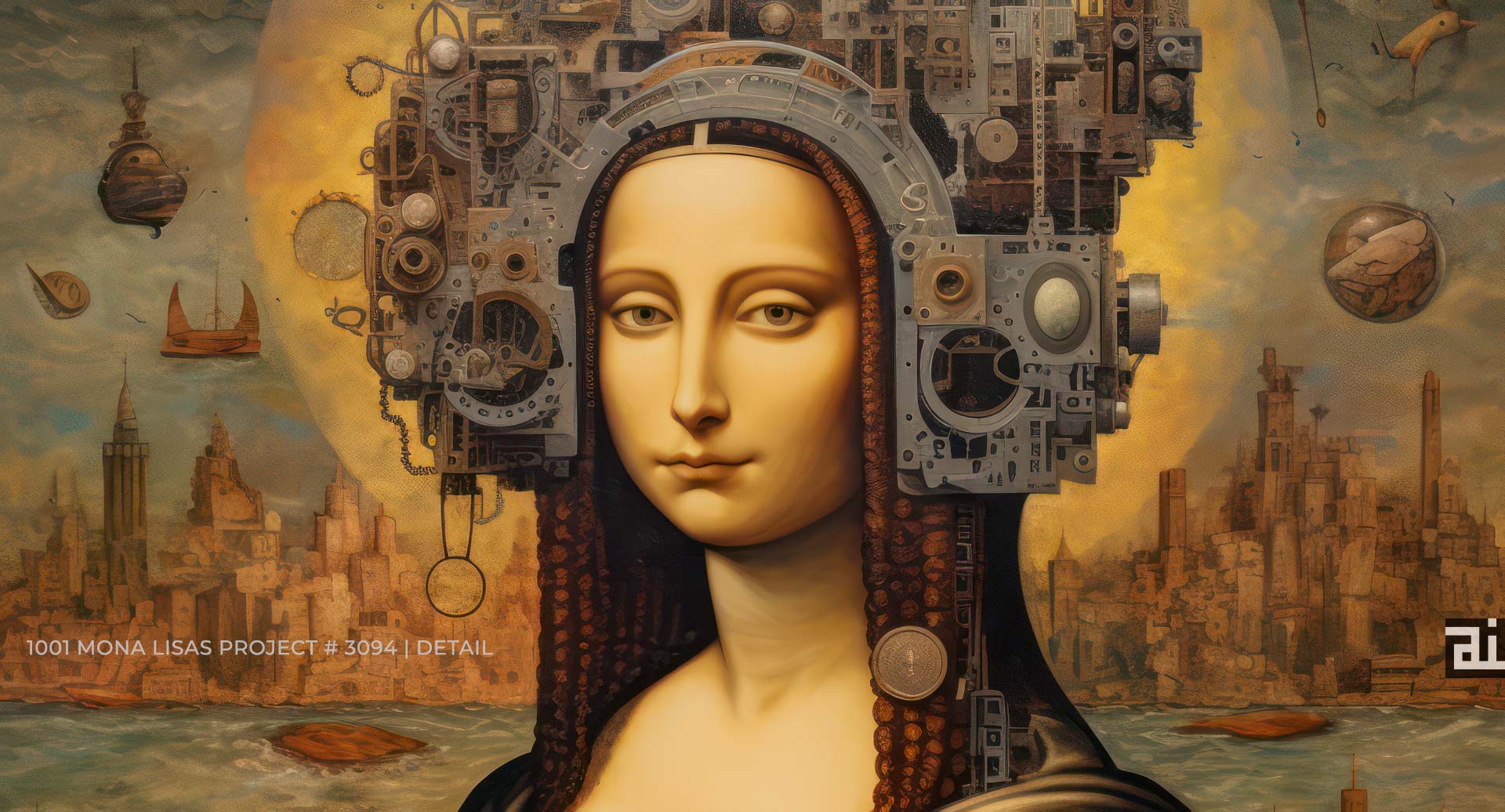
A detailed comparison of Monas #3094 and #3096. Drag the mouse horizontally to compare.
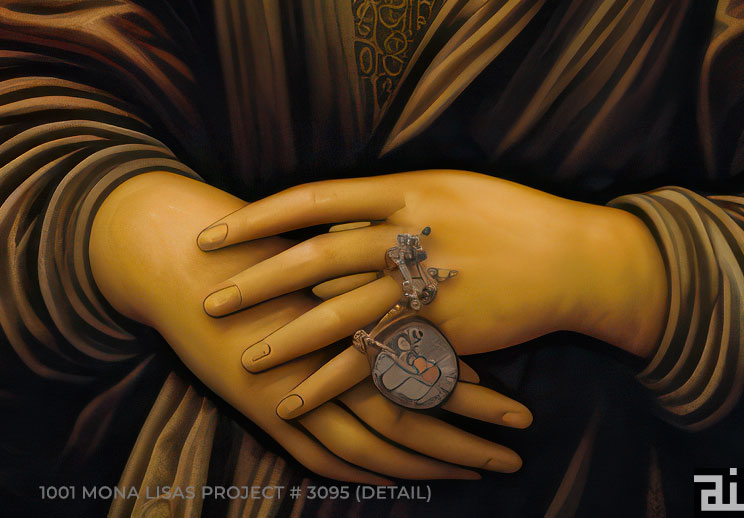
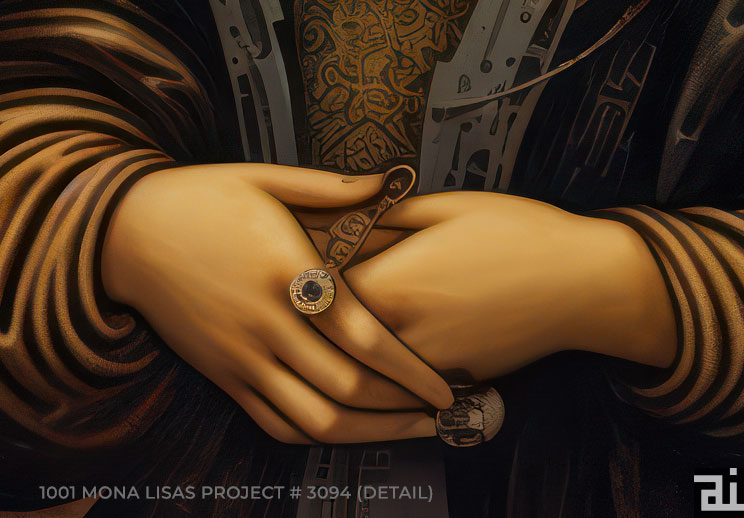
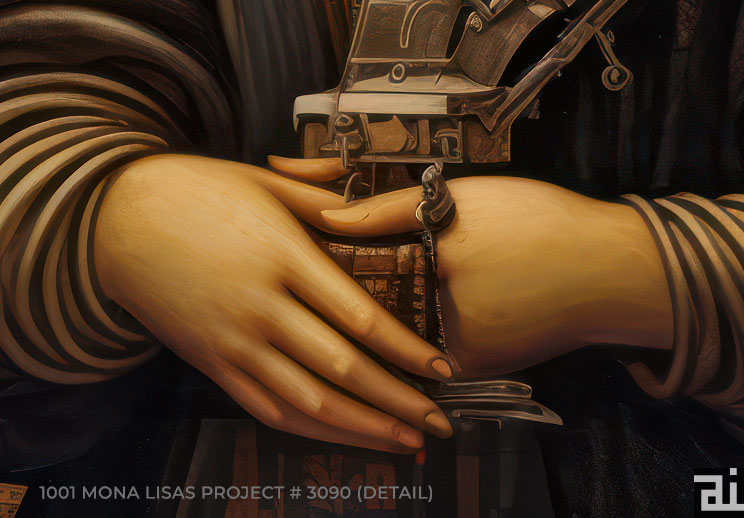
Above, three examples of hand details. Notice how the positions are completely different and how in each scene they are holding strangers and different objects.
“Arguably creations made with AI are unique in their own right.”
/ Conclusions
With more than 40 years working with design, illustrations, painting and a wide variety of projects in the vast space of the visual arts and having experimented with the most diverse techniques and tools, one thing is certain for me: the use of Artificial Intelligence to generate images, whether figures, drawings, hyper-realistic representations, photographs or others is simply astonishing.
How long would it take to me to create and produce such a large project with 1000 versions of a masterpiece like the Mona Lisa, with all the variation and richness possible? Undoubtly It would take many months of work and a large team of illustrators, photographers and artists.
“I have no doubt that we are facing large and complex ethical questions about the impact of this technology on the world as we know it, or at least as we used to know it.”
/ The AI logo
To identify that all artwork was produced using Generative AI, I created a minimalist tag explained below.
The symbol starts with a black square, representing what is known in the machine learning process as a “Black Box”